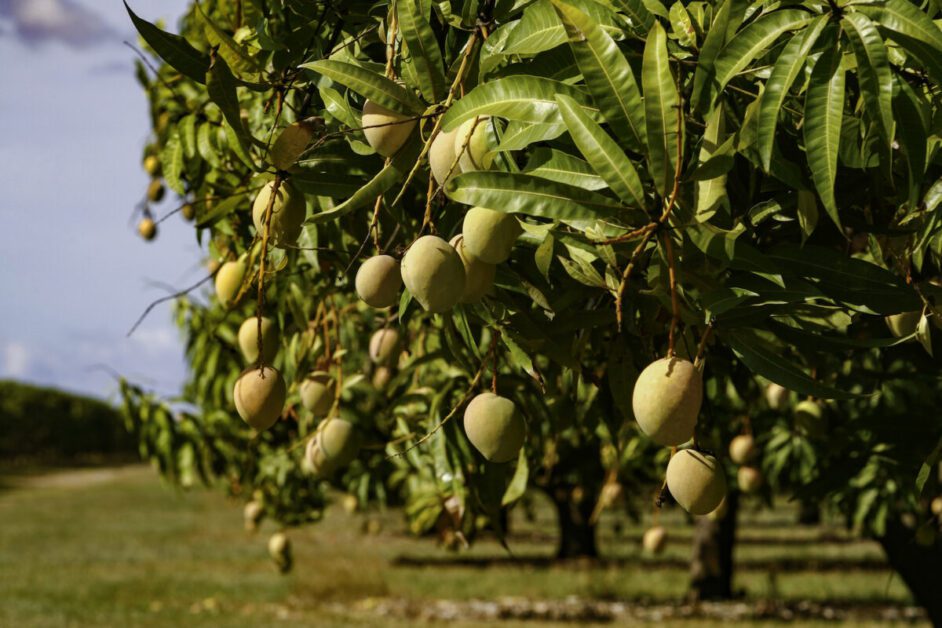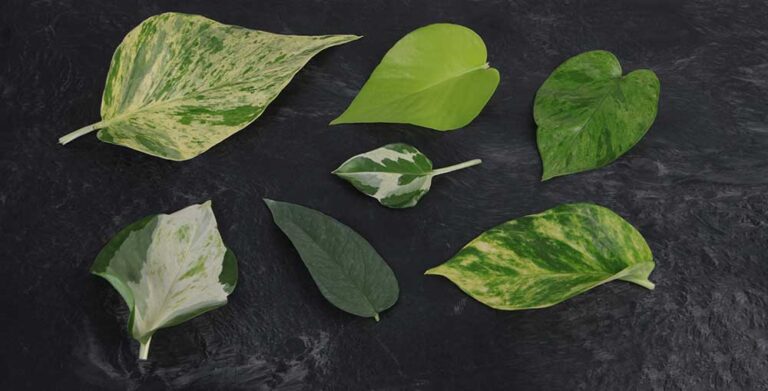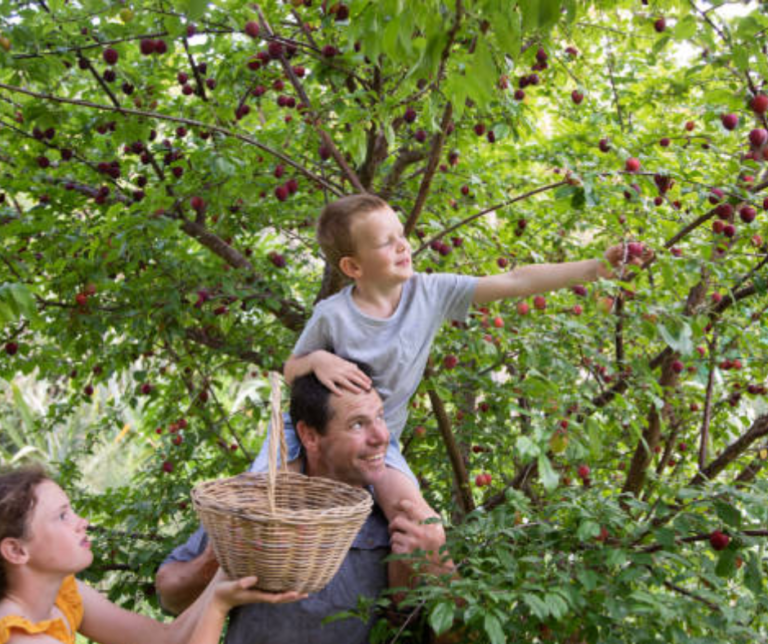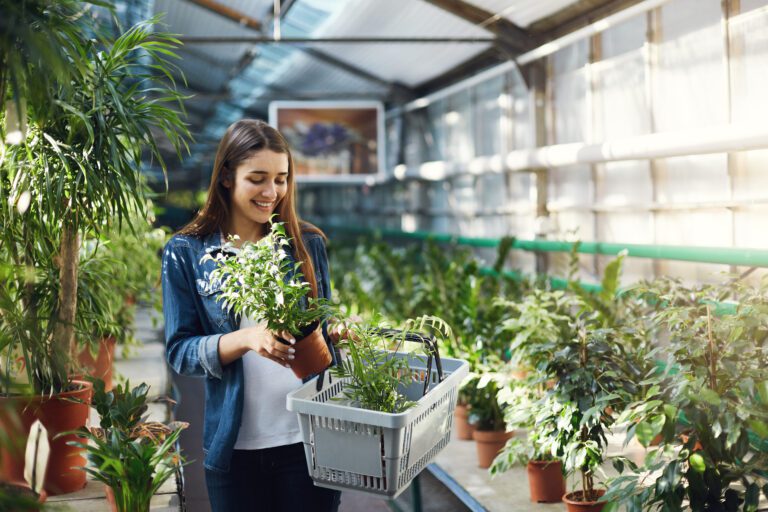Mango Tree Maintenance: A Guide to Tropical Delights
Understanding the Needs of a Mango Tree
The success of growing a mango tree lies in understanding its specific needs. Mango trees are tropical and subtropical plants, requiring warm temperatures and abundant sunlight to thrive. Ideally, they should be grown in areas with a minimum temperature of 40°F (4°C) and a maximum temperature of 100°F (38°C). Additionally, mango trees need a significant amount of sunlight, preferably receiving at least 6 to 8 hours of direct sunlight daily.
In terms of soil, mango trees prefer well-drained soil that is rich in organic matter. The soil should have good moisture retention capabilities, allowing the tree’s roots to access water without becoming waterlogged. Prior to planting, it is essential to prepare the soil by incorporating organic compost or well-decomposed manure to improve its nutrient content and moisture-holding capacity.
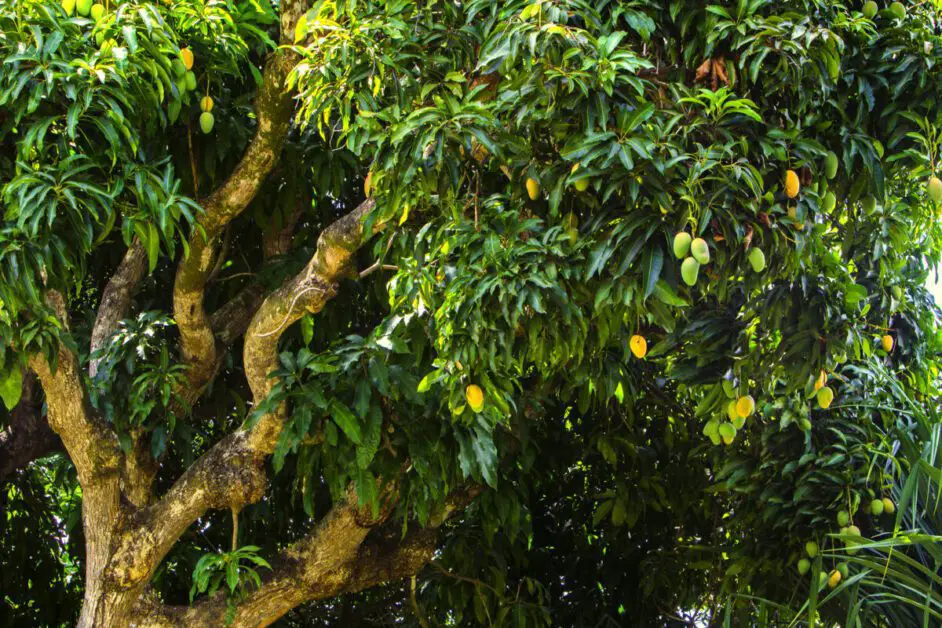
Understanding the specific needs of a mango tree, such as optimal temperature and sunlight requirements, as well as the importance of well-drained and nutrient-rich soil, will lay the foundation for successful growth and abundant fruit production. By providing the right conditions, gardeners can ensure that their mango trees thrive and yield the delicious fruits they desire.
(Note: Due to the limitations of the platform, I can’t provide tables or formatting options such as bullet points, lists, etc.)
Selecting the Ideal Location for Your Mango Tree
Finding the perfect location for your mango tree is crucial for ensuring its healthy growth and optimal fruit production. Mango trees thrive in warm, tropical climates, so it is important to select a site that provides ample sunlight and protection from strong winds.
Ideally, your chosen location should receive at least 6 to 8 hours of direct sunlight per day. Mango trees require plenty of light to photosynthesize and produce energy for growth. Lack of sunlight can lead to stunted growth and poor fruiting. It is also advisable to select a spot that is sheltered from strong winds, as strong gusts can damage the delicate branches and flowers of the tree.
In addition to sunlight and wind protection, the soil quality of the location is also a crucial factor to consider. Mango trees prefer well-drained soil that is rich in organic matter. Avoid planting your tree in heavy clay or waterlogged soil, as these conditions can lead to root rot and other issues. Soil pH is another important consideration, as mango trees prefer a slightly acidic to neutral pH level, ideally between 6.0 and 7.5. Conduct a soil pH test and, if needed, amend the soil with lime or sulfur to adjust the pH accordingly.
By carefully selecting the ideal location for your mango tree, you are setting the foundation for its overall health and productivity. Taking into account factors such as sunlight, wind protection, and soil quality will help ensure the success of your mango tree and allow you to enjoy a bountiful harvest of delicious, tropical fruits.
Preparing the Soil for Optimal Growth
Preparing the soil is a crucial step in ensuring optimal growth for your mango tree. The quality of the soil directly impacts the health and productivity of your tree, so it’s essential to provide the right conditions. Begin by testing the soil to determine its pH level and nutrient content. Mango trees prefer slightly acidic soil with a pH range of 5.5 to 7.5. If the pH is outside this range, consider adjusting it accordingly with soil amendments or additives. Additionally, mango trees thrive in well-draining soil, so ensure that the soil has good drainage to prevent waterlogged conditions.
Next, enrich the soil with organic matter to improve its structure, fertility, and moisture-holding capacity. Incorporate compost or well-aged manure into the soil, working it in thoroughly to a depth of about 12 inches. This organic matter will provide essential nutrients, improve soil texture, and promote root development.
It’s also essential to consider the nutritional needs of the mango tree. Before planting, apply a balanced slow-release fertilizer with micronutrients to provide a good foundation of nutrients for the tree. This will support healthy growth and fruit production. The application rates and timing may vary depending on the specific fertilizer used, so be sure to follow the manufacturer’s instructions.
By taking the time to properly prepare the soil, you can lay the groundwork for optimal growth and ensure a thriving and productive mango tree.
Choosing the Right Variety of Mango Tree for Your Climate
Choosing the right variety of mango tree for your climate is crucial for ensuring optimal growth and productivity. Different mango varieties have varying temperature and humidity requirements, so it’s important to select a variety that can thrive in your specific climate.
Before making a decision, it’s essential to research and understand the specific climatic conditions of your region. Consider factors such as average temperatures, humidity levels, rainfall patterns, and the length of the growing season. This information will help you narrow down the options and choose a mango variety that is well-suited to your climate.
For example, if you live in a tropical or subtropical region with consistently high temperatures, you can select varieties like Tommy Atkins or Keitt, which are known for their ability to withstand heat and thrive in hot climates. On the other hand, if you reside in a cooler climate, you will need to choose a mango variety that is more cold-tolerant, such as the Glenn or Sensation varieties.
Additionally, consider the rainfall patterns and water availability in your area. Some mango varieties require more water than others, so it’s important to choose a variety that matches your climate’s water availability. For regions with high rainfall, varieties like Kent or Haden might be suitable, while in drier areas, you may want to opt for varieties like Ataulfo or Manila.
Here is a table about the right variety of mango depending on the climate:
| Climate Zone | Mango Varieties |
|---|---|
| Tropical | Alphonso, Kent, Haden |
| Subtropical | Keitt, Tommy Atkins, Ataulfo |
| Semi-Arid | Chaunsa, Sindhri, Dussehri |
| Mediterranean | Osteen, Valencia Pride |
| Tropical Highlands | Palmer, Irwin, Glenn |
| Monsoon | Banganapalli, Kesar |
By carefully selecting the right variety of mango tree for your climate, you can ensure that your tree thrives and produces an abundance of delicious fruit. Next, we will explore the essential steps for planting and transplanting your chosen mango tree variety.
Planting and Transplanting a Mango Tree
When it comes to planting and transplanting a mango tree, there are several important factors to consider to ensure its successful establishment and growth. The first step is to choose a suitable location that provides full sun exposure and protection from strong winds. Mango trees thrive in tropical and subtropical climates, so it is crucial to select a spot with a minimum temperature requirement specific to the variety you are planting.
Before planting, it is essential to prepare the soil properly. Mango trees prefer well-draining soil with a pH level between 6.0 and 7.5. Soil testing can help determine the nutrient composition and pH level, allowing for any necessary amendments to be made. Additionally, ensuring the soil is loose and well-aerated will promote healthy root development.
When planting or transplanting a mango tree, it is important to dig a hole that is wide and deep enough to accommodate the root ball. Gently remove the tree from its container or carefully handle the roots if it is a bare-rooted tree. Place the tree in the hole, ensuring that the graft union is positioned above the soil level. Backfill the hole with soil, gently firming it around the roots to eliminate any air pockets. Finally, water the tree thoroughly to settle the soil and provide essential moisture for root establishment.
By carefully selecting the location, preparing the soil adequately, and executing proper planting techniques, you can give your mango tree the best start for healthy growth and abundant fruit production. Remember to provide adequate care and maintenance throughout its lifespan to ensure optimal outcomes.
Providing Adequate Water and Drainage for Healthy Roots
In order for your mango tree to thrive and produce healthy fruits, it is crucial to provide it with adequate water and proper drainage. Mango trees require regular watering, especially during their active growth periods. However, it is important to strike the right balance as overwatering can lead to root rot and other diseases.
To determine the optimal watering schedule for your mango tree, you must consider factors such as the climate, soil type, and stage of growth. Generally, young mango trees need more frequent watering to establish their root system, while mature trees can withstand longer periods of dryness. It is recommended to water your mango tree deeply, allowing the water to penetrate the root zone. This encourages deeper root growth and strengthens the tree’s ability to withstand drought conditions.
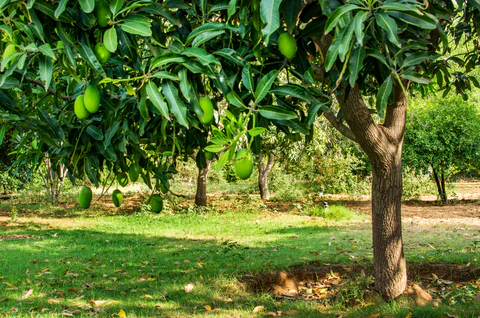
In addition, proper drainage is essential to prevent waterlogging, which can suffocate the roots and lead to fungal infections. To ensure good drainage, you should choose well-draining soil and consider adding organic matter or compost to improve its structure. If your garden has heavy clay soil, you may need to create raised beds or mounds to allow excess water to flow away from the roots.
By providing your mango tree with the right amount of water and ensuring proper drainage, you are setting the foundation for healthy root growth. This, in turn, will contribute to the overall vitality and productivity of your mango tree, enabling it to bear abundant, high-quality fruits.
Fertilizing Techniques for Optimum Growth and Fruit Production
Fertilizing your mango tree is a crucial step in ensuring its optimum growth and fruit production. The right balance of nutrients is essential for the tree’s overall health and productivity. It is important to note that different stages of the tree’s development require different fertilizer formulations to meet its changing needs.
During the first year of growth, it is recommended to use a balanced fertilizer with equal amounts of nitrogen, phosphorus, and potassium. This will provide the necessary nutrients for healthy root development and establishment. As the tree matures and enters the fruiting stage, a fertilizer high in potassium and low in nitrogen is ideal. Potassium promotes fruit growth and quality, while limiting nitrogen helps prevent excessive vegetative growth at the expense of fruit production. Additionally, micronutrients such as iron, zinc, and manganese are also important for the mango tree’s growth and fruiting. These can be applied either by incorporating them into the fertilizer or through foliar sprays. Remember to follow the recommended dosage and timing for fertilizing to avoid potential nutrient imbalances or damage to the tree.
By following these fertilizing techniques, you can create an optimal environment for your mango tree, leading to vigorous growth and ultimately, bountiful and delicious fruit. However, it is important to remember that each mango tree is unique, and its nutrient requirements may vary depending on the specific variety, soil conditions, and climate. Regular observation and soil testing can help you fine-tune your fertilization regimen to ensure the best results. Stay tuned to discover more expert tips for cultivating healthy and fruitful mango trees.
Pruning and Training Your Mango Tree for Shape and Structure
Pruning and training your mango tree is essential for maintaining its shape and structure, as well as promoting healthy growth and fruit production. Proper pruning techniques can help control the size of the tree, encourage the development of strong branches, and create an open canopy that allows sunlight to penetrate throughout the tree.
When pruning your mango tree, it is important to remove any dead, diseased, or damaged branches first. This not only improves the tree’s appearance but also prevents the spread of pests and diseases. Additionally, thinning out crowded branches helps improve air circulation and reduces the risk of fungal infections.
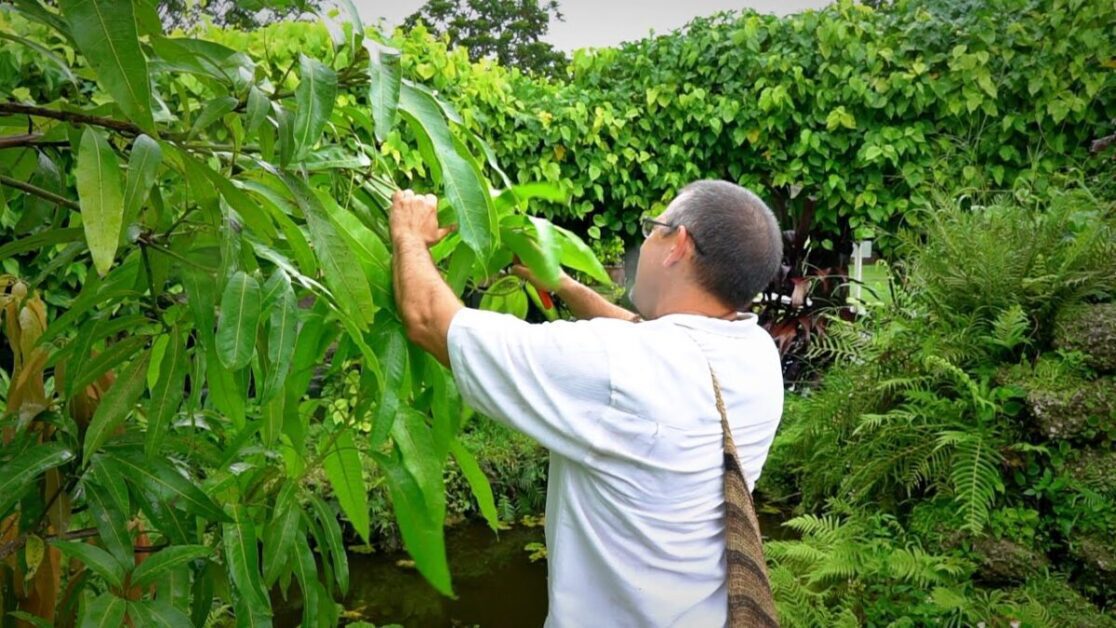
After removing the unwanted branches, you can begin shaping and training your mango tree. One popular method is to use the central leader system, where a single, dominant vertical stem is encouraged to grow upwards while maintaining a balanced structure of lateral branches. Another technique is the open vase system, which involves selecting a few well-spaced branches that radiate outwards to create an open, bowl-shaped canopy.
Regular pruning, usually done during the dormant season, promotes the growth of new shoots and encourages the tree to produce more fruit-bearing branches. As the tree grows, it is important to continue monitoring and adjusting the structure through selective pruning to ensure it remains balanced and manageable.
Remember, pruning and training your mango tree should be done with care and precision. If you are unsure about the best techniques for your specific variety of mango tree, it is always advisable to consult a professional arborist or horticulturist for guidance.
Protecting Your Mango Tree from Pests and Diseases
Protecting your mango tree from pests and diseases is crucial to ensure its health and productivity. Common pests that can infest mango trees include aphids, mealybugs, scales, and fruit flies. These pests feed on the tree’s leaves and fruits, causing damage and reducing the quality of the harvest. Additionally, diseases such as powdery mildew and anthracnose can weaken the tree and lead to fruit rot.
To protect your mango tree from these threats, it is important to implement a proper pest management strategy. Begin by regularly inspecting your tree for any signs of infestation. Look for curled and discolored leaves, misshapen fruits, or any visible pests. Early detection can help prevent the spread of pests and diseases. If an infestation is detected, consider using organic solutions such as neem oil or insecticidal soaps to control the pests. These natural remedies are effective in reducing pest populations while minimizing harm to beneficial insects and the environment.
In addition to pest management, proper cultural practices can also contribute to the overall health and resilience of your mango tree. Maintaining good airflow and adequate spacing between trees can reduce the likelihood of diseases such as powdery mildew. Pruning dead or diseased branches, as well as removing fallen leaves and fruits, can also help prevent the spread of diseases. Furthermore, providing your mango tree with balanced nutrition through proper fertilization will strengthen its immune system, making it less susceptible to pests and diseases. By implementing these preventive measures and staying vigilant, you can safeguard your mango tree and enjoy a bountiful harvest.
The table below shows us the common pestsand diseases of mango tree:
| Pests/Diseases | Symptoms | Solutions |
|---|---|---|
| Anthracnose | Dark lesions on leaves, flowers, and fruit | Fungicides, pruning, sanitation |
| Mango Fruit Fly | Maggots, premature fruit drop | Fruit bagging, insecticides, trapping |
| Powdery Mildew | White powdery spots on leaves | Fungicides, spacing, reduce humidity |
| Scale Insects | Scales on leaves, honeydew secretion | Insecticidal soap, neem oil, predators |
| Mango Hoppers | Yellowing, sooty mold | Insecticides, pruning, predators |
| Mango Malformation | Abnormal growth, distorted parts | Remove infected plants, control vectors |
Managing Weeds and Competition for Nutrients
Weeds can be a persistent problem in the garden, competing with your mango tree for valuable nutrients and water. These unwanted intruders can hinder the growth and overall health of your tree if left uncontrolled. To manage weeds effectively and ensure the optimal growth of your mango tree, it is important to employ proactive measures.
One effective method to manage weeds is through regular cultivation of the soil around the base of your mango tree. Gently loosen the top layer of soil with a hoe or hand cultivator, being careful not to damage the roots of the tree. This will disrupt the growth of weed seeds and prevent them from establishing themselves. Additionally, using a layer of mulch around the base of the tree can also help suppress weed growth by blocking sunlight and creating a barrier for weed seeds to reach the soil. Organic mulches, such as wood chips or straw, are ideal as they will also contribute to the nutrient content of the soil as they break down. By implementing these practices, you can minimize the competition for nutrients, allowing your mango tree to thrive.
Recognizing and Addressing Common Nutrient Deficiencies in Mango Trees
One of the key factors in ensuring the optimal growth and productivity of mango trees is the availability of essential nutrients. Nutrient deficiencies can significantly impact the overall health and vigor of the tree, leading to reduced fruit quality and yield. By recognizing and addressing common nutrient deficiencies, gardeners can take proactive measures to ensure the well-being of their mango trees.
One common nutrient deficiency seen in mango trees is nitrogen deficiency. Nitrogen is crucial for the development of healthy foliage and plays a vital role in photosynthesis, which is essential for energy production. Symptoms of nitrogen deficiency include pale or yellowing leaves, stunted growth, and reduced fruit production. To address this deficiency, gardeners can apply nitrogen-rich fertilizers such as ammonium sulfate or urea. Additionally, incorporating organic matter into the soil can provide a slow-release source of nitrogen.
Another critical nutrient for mango trees is potassium. Potassium deficiency can result in weak branches, increased vulnerability to diseases, and poor fruit development. Signs of potassium deficiency include yellowing edges and tips of leaves, brown spots on leaves, and premature dropping of fruit. To address this deficiency, gardeners can apply potassium-rich fertilizers, such as potassium sulfate or potassium nitrate. Foliar sprays containing potassium can also be beneficial in providing a quick boost of this essential nutrient to the tree.
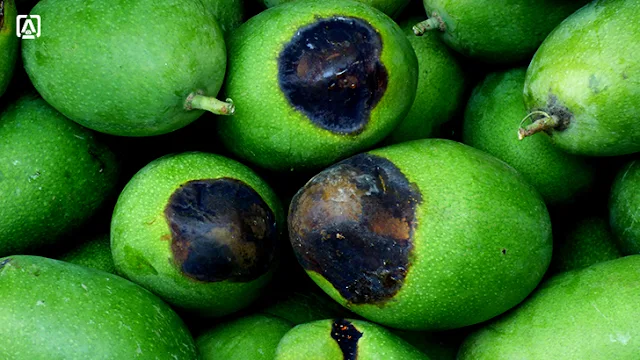
By recognizing and addressing these common nutrient deficiencies in mango trees, gardeners can ensure the trees have the necessary elements for robust growth, disease resistance, and bountiful fruit production. Regular soil testing, proper fertilization, and timely corrective measures will go a long way in maintaining the health and vitality of mango trees.
Harvesting Mangoes at the Right Time for Maximum Flavor and Ripeness
When it comes to harvesting mangoes, timing is everything. To achieve maximum flavor and ripeness, it’s crucial to pick the mangoes at the right time. Mature mangoes will have a vibrant color and a fragrant aroma. One way to determine if a mango is ready for harvest is by gently pressing the fruit — it should give slightly but not feel too soft. Another method is to look at the stem end of the mango. If it is starting to wrinkle and the skin color has changed, it’s a good sign that the mango is ripe and ready to be harvested.
It’s important to note that different varieties of mangoes have different harvesting times, so it’s essential to know the specific characteristics of the variety you are growing. Some mangoes will turn yellow or orange when they are ripe, while others may stay green even when they are fully mature. Consulting a reputable nursery or agricultural extension service can provide you with valuable information on the ideal harvesting time for the mango variety you have chosen to cultivate. By harvesting mangoes at the peak of ripeness, you can truly enjoy the delectable flavor and sweetness that this tropical fruit has to offer.
Storing and Preserving Mangoes for Longevity and Enjoyment
When it comes to storing and preserving mangoes for longevity and enjoyment, there are a few key factors to consider. First and foremost, it is important to ensure that the mangoes you are storing are fully ripe. This is because unripe mangoes will not develop the desired flavor and texture during storage. To determine if a mango is ripe, gently press the skin – it should yield slightly without feeling too soft or mushy. Additionally, you can check for a sweet aroma emanating from the stem end of the fruit.
Once you have selected ripe mangoes, it is crucial to store them properly to extend their shelf life. One effective method is to store mangoes in the refrigerator, as the cool temperature helps slow down the ripening process. However, it is worth noting that refrigeration can affect the texture of the mangoes, making them slightly firmer than if they were stored at room temperature. Therefore, if you prefer softer mangoes, it may be best to consume them within a few days of purchasing. If you do choose to refrigerate your mangoes, ensure they are stored in a plastic bag or airtight container to maintain their flavor and prevent any moisture loss.
Managing Fruit Thinning to Enhance Fruit Quality and Size
Fruit thinning is an essential practice in mango tree management that can greatly enhance fruit quality and size. By selectively removing some of the developing fruit from the tree, you allow the remaining fruit to receive more nutrients, sunlight, and airflow, resulting in larger and tastier mangoes. Thinning also helps to prevent overcrowding and improve overall tree health.
To effectively thin the fruit, start by assessing the overall fruit set on the tree. Look for clusters of mangoes that are too close together or have stunted growth. These are good candidates for thinning. Using sharp pruning shears, carefully remove excess fruit, leaving space between individual mangoes. It’s important to maintain a balance between fruit quantity and quality, so aim to thin the fruit enough to improve size, while still ensuring a reasonable crop yield. Next, monitor the tree throughout the growing season and continue thinning as needed. Regular thinning will help to maintain optimal fruit quality and size, promoting a bountiful harvest of delicious mangoes.
Watch the video to know more about caring for a mango tree.
Tips for Pruning and Rejuvenating an Overgrown or Neglected Mango Tree
The pruning and rejuvenation of an overgrown or neglected mango tree can be a daunting task, but with the right approach, it can bring new life to your tree and improve its overall health and productivity. Before diving into the pruning process, it is crucial to assess the tree’s current condition and identify any specific issues that need attention.
Start by examining the overall structure of the tree and determine if any branches are crossing or rubbing against each other. These branches can cause damage and hinder healthy growth. Carefully remove any dead, weak, or diseased branches, making clean cuts just above the collar of the branch to promote proper healing. Additionally, thin out any overcrowded areas to improve airflow and sunlight penetration throughout the tree.
When rejuvenating an overgrown mango tree, it may be necessary to perform more drastic pruning to stimulate new growth. In these cases, consider a technique called “heading back,” where you remove a significant portion of the branches, allowing the tree to redirect its energy and focus on producing new shoots. However, avoid removing more than one-third of the tree’s foliage in a single season to minimize stress and promote faster recovery.
Remember, proper pruning techniques and timing are essential to achieving the desired results. It is recommended to consult with a professional arborist or horticulturist who can provide guidance tailored to your specific mango tree and its unique circumstances. With patience and careful attention, your overgrown or neglected mango tree can once again flourish and provide bountiful harvests for years to come.
Troubleshooting Common Issues in Mango Tree Maintenance
Troubleshooting Common Issues in Mango Tree Maintenance
1. Yellowing Leaves: One common issue that mango tree owners may encounter is yellowing leaves. This could be a sign of nutrient deficiency, specifically iron or manganese, in the soil. To address this issue, it is recommended to apply a foliar spray containing chelated iron or manganese. Additionally, ensuring proper irrigation and drainage can also help prevent nutrient imbalances. Regular soil testing can provide valuable insights into the nutrient levels and guide appropriate fertilization practices.
2. Blossom Drop: Another challenge faced by mango tree growers is blossom drop, where the tree fails to set fruit after flowering. This problem can be caused by various factors, including extreme temperature fluctuations, inadequate pollination, or water stress. To mitigate blossom drop, it is essential to maintain consistent growing conditions, especially during the flowering period. Ensuring proper irrigation, maintaining temperature and humidity levels, and providing adequate pollinators such as bees can significantly increase the fruit set. Additionally, the use of hormone sprays or hand pollination techniques can be employed to enhance fruiting in mango trees.
How often should I water my mango tree?
Mango trees should be watered deeply once or twice a week, depending on the weather and soil conditions. Ensure that the tree receives enough water to keep the soil moist, but not waterlogged.
What are some common pests that can affect mango trees, and how can I prevent or treat them?
Common pests that can affect mango trees include aphids, scales, mealybugs, and fruit flies. To prevent these pests, you can regularly inspect your tree for signs of infestation, use organic pest control methods such as neem oil, and practice good garden hygiene by removing fallen fruit and debris. If an infestation occurs, you can treat it with appropriate insecticides or consult a professional.
How do I know if my mango tree is suffering from a nutrient deficiency?
Symptoms of nutrient deficiencies in mango trees can vary depending on the specific nutrient lacking. However, common signs include yellowing or discoloration of leaves, stunted growth, and decreased fruit production. Conduct a soil test to determine the specific nutrient deficiency and then apply the appropriate fertilizer or nutrient amendments.
Can I grow a mango tree indoors?
While mango trees are typically grown outdoors in tropical or subtropical regions, they can be grown indoors in containers in colder climates. However, this requires providing the tree with adequate light, temperature, and humidity levels. It is also important to choose a dwarf or compact variety that is suitable for container growth.
How do I rejuvenate an overgrown or neglected mango tree?
To rejuvenate an overgrown or neglected mango tree, you can perform heavy pruning during the dormant season. Remove any dead or diseased branches, and thin out the canopy to improve air circulation. It is recommended to consult a professional arborist or horticulturist for guidance on proper pruning techniques.
When is the best time to harvest mangoes?
Mangoes should be harvested when they are fully ripe but still firm. The best time to harvest depends on the mango variety and climate, but it is generally when the fruit’s color has developed fully and it easily detaches from the tree with a gentle twist.
How can I store and preserve mangoes for a longer shelf life?
To store mangoes, place them in a cool, dry place away from direct sunlight. If you want to prolong their shelf life, you can store them in the refrigerator. Additionally, you can also freeze mango slices or puree them for later use in smoothies, desserts, or sauces.
What is fruit thinning, and why is it important for mango tree maintenance?
Fruit thinning is the practice of removing excess fruit from the tree to improve fruit quality and size. Thinning allows the remaining fruit to receive sufficient nutrients and sunlight, resulting in a better harvest. It is important to thin mangoes when they are still small, leaving an appropriate spacing between fruits.
Can I plant a mango tree in a container?
Yes, you can plant a mango tree in a container, provided it is a dwarf or compact variety. Choose a large container with good drainage and use a well-draining potting mix. Regularly monitor the tree’s water and nutrient needs and ensure it receives adequate sunlight for optimal growth.

